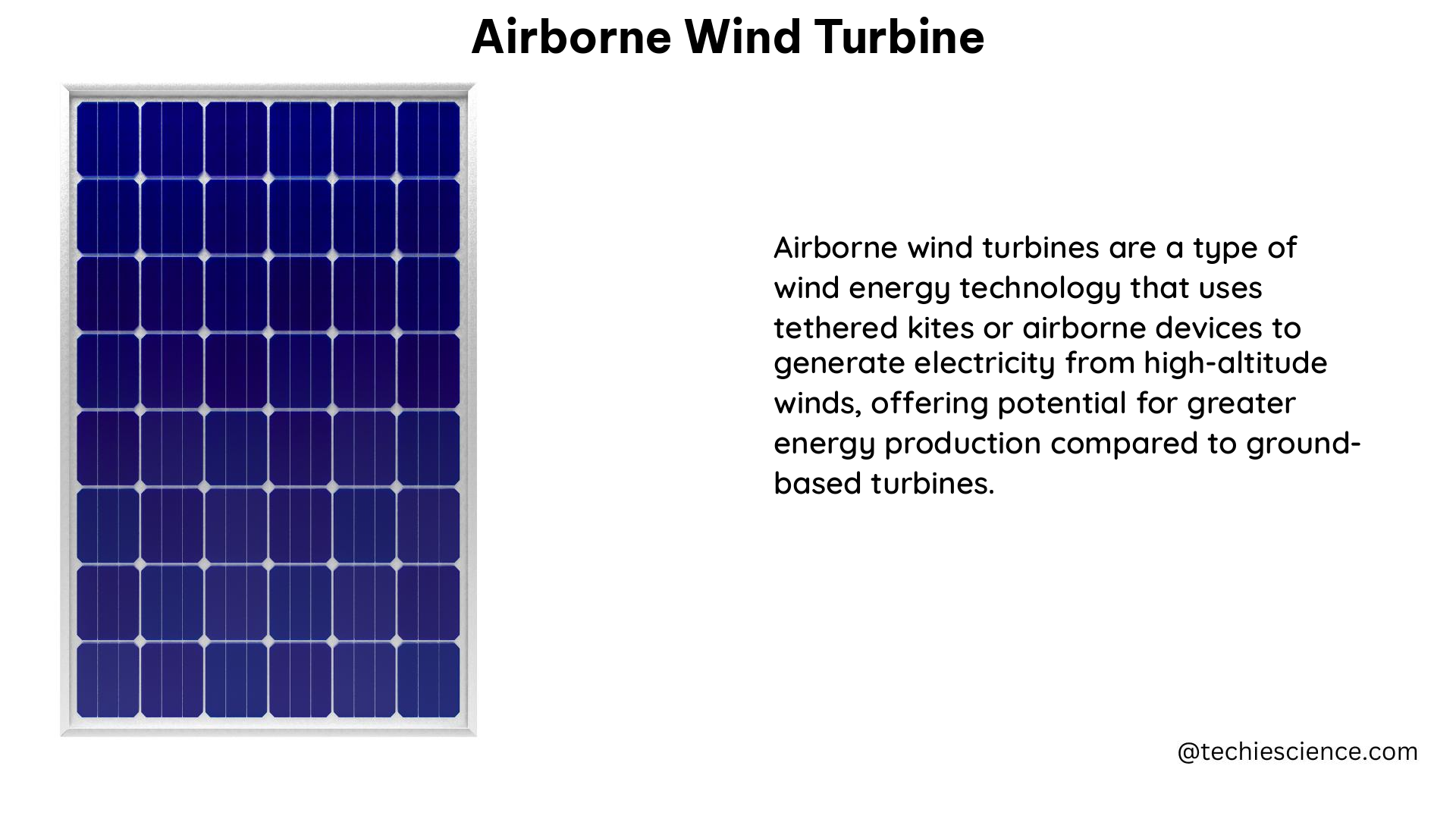Airborne wind turbines (AWTs) have the potential to significantly contribute to the wind energy sector with their high-altitude wind resource potential and high capacity densities. The technical potential for AWT in the conterminous United States varies drastically, ranging from 420 to 34,573 gigawatts (GW) and 1,615 to 92,469 terawatt-hours (TWh) depending on the system design. The land-based technical potential for AWT is influenced by technology-archetype-driven design constraints, such as the experience or avoidance of high-tether drag and power-to-weight ratios.
Capacity Densities and Performance
The capacity densities for commercial-scale AWT extend to higher values than those in existing traditional wind power plants, reaching up to 19.6 MW/km^2 for a 5-MW rigid-wing kite and 4.0 MW/km^2 for a 500-kW rigid-wing kite. However, these densities do not account for wake losses or other siting constraints.
| AWT System | Capacity Density (MW/km^2) |
|---|---|
| 5-MW Rigid-Wing Kite | 19.6 |
| 500-kW Rigid-Wing Kite | 4.0 |
The wind energy resource potential relevant to AWT primarily targets heights between 200 and 800 meters (m), with positive wind shear above 200 m not found consistently in analyses. Selected sites and wind profiles appeared to be rather flat, with more evidence of positive shear on land than offshore.
Techno-Economic Analysis and Uncertainty

The uncertainty in the techno-economic analysis of AWT is significant due to the lack of megawatt-scale products or commercial deployments on which to base the analysis. The wide range of AWT designs, performance, operational strategies, and cost projections found in literature and shared at the recent U.S. airborne wind workshop contribute to this uncertainty.
Some key data points on the techno-economic analysis of AWT:
- Technical potential for AWT in the conterminous United States: 420 to 34,573 GW and 1,615 to 92,469 TWh
- Capacity densities for commercial-scale AWT: up to 19.6 MW/km^2 for a 5-MW rigid-wing kite and 4.0 MW/km^2 for a 500-kW rigid-wing kite
- Wind energy resource potential relevant to AWT: primarily targets heights between 200 and 800 meters (m)
Developmental Stage and Comparison to Traditional Wind Turbines
The development of AWT is at a precommercial stage, with a focus on evaluating individual units at small scales. Comparing costs or performance between existing AWT systems and commercial-scale traditional wind turbines is not appropriate due to the experiential learning, economies of scale, maturing supply chains, and technological advancement that traditional wind turbines have benefited from.
Safety and Reliability
In terms of safety and reliability, the majority of mitigation measures for a 100-kW technology development platform can be performed by a failure detection, isolation, and recovery (FDIR) system adapted from the space industry. This includes:
- Redundant systems and components
- Automated fault detection and isolation
- Rapid recovery and reconfiguration capabilities
Conclusion
Airborne wind turbines hold significant potential for contributing to the wind energy sector, with their ability to harness high-altitude wind resources and achieve high capacity densities. However, the technology is still in a precommercial stage, and significant uncertainty remains in the techno-economic analysis due to the lack of large-scale deployments and commercial products. Ongoing research and development efforts are focused on improving the safety, reliability, and scalability of AWT systems to unlock their full potential.
References:
– National Renewable Energy Laboratory (2021). Airborne Wind Energy.
– U.S. Department of Energy (2021). Challenges and Opportunities for Airborne Wind Energy in the United States.
– ScienceDirect (2020). Computing the power profiles for an Airborne Wind Energy system.
– Copernicus (2023). Impact of wind profiles on ground-generation airborne wind energy.
– Wiley Online Library (2019). Improving reliability and safety of airborne wind energy systems.

The lambdageeks.com Core SME Team is a group of experienced subject matter experts from diverse scientific and technical fields including Physics, Chemistry, Technology,Electronics & Electrical Engineering, Automotive, Mechanical Engineering. Our team collaborates to create high-quality, well-researched articles on a wide range of science and technology topics for the lambdageeks.com website.
All Our Senior SME are having more than 7 Years of experience in the respective fields . They are either Working Industry Professionals or assocaited With different Universities. Refer Our Authors Page to get to know About our Core SMEs.